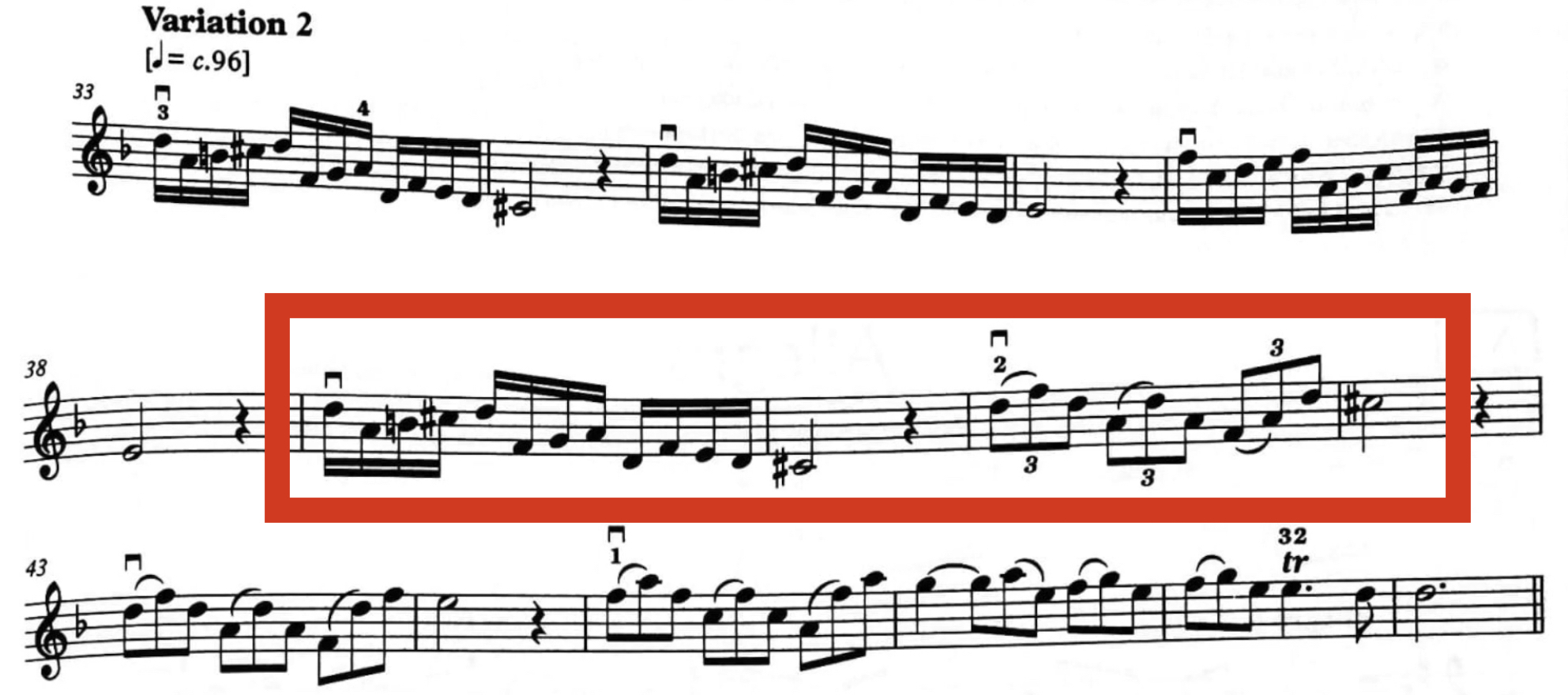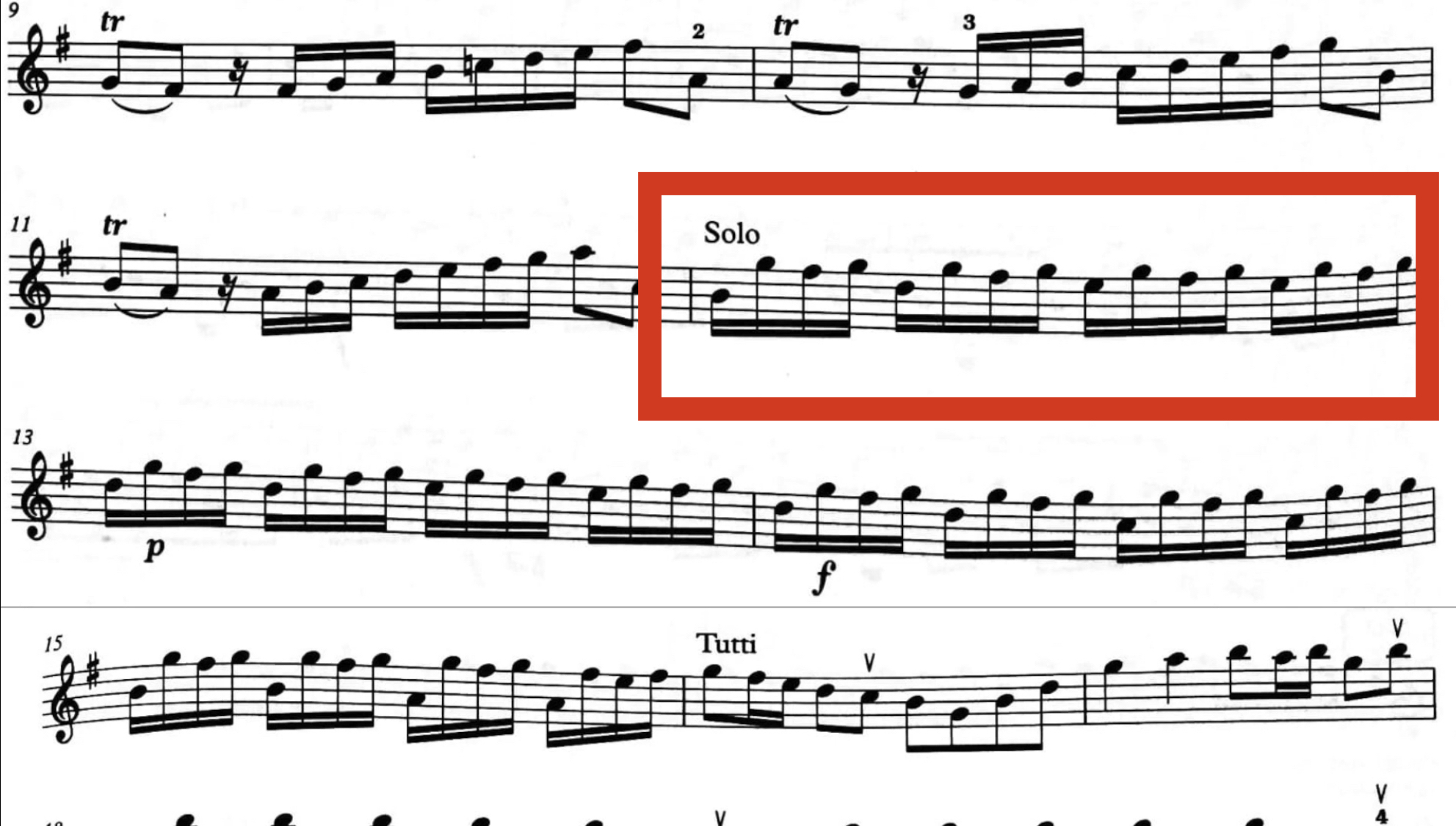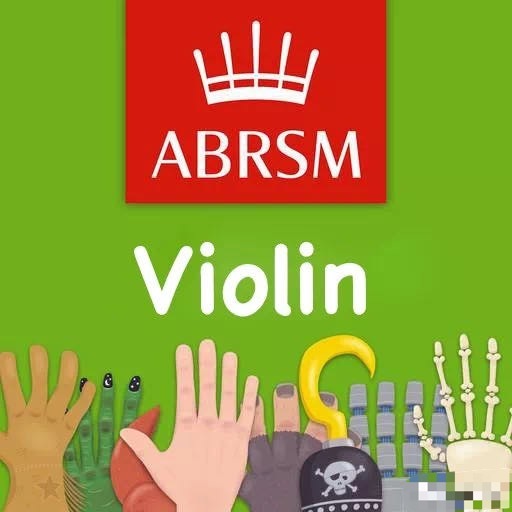
一,三連音以及相同節奏控制弓子速度——-A1
上一期關於三級的曲目我們已經對三連音有所了解,也清楚三連音這三個音的長短也是完全相同的,但是此處我們又想對此展開講解是為什麼呢?我們仔細注意看,A1曲目三連音前兩個音是同弓的連弓法,第三個音用上弓快速呢回弓。一次重複弓法。所以難點在於,回弓的速度加快,但是又不能加重弓壓,保證在同等弓子長短的情況下拉出連弓前兩個音和分弓第三個音。
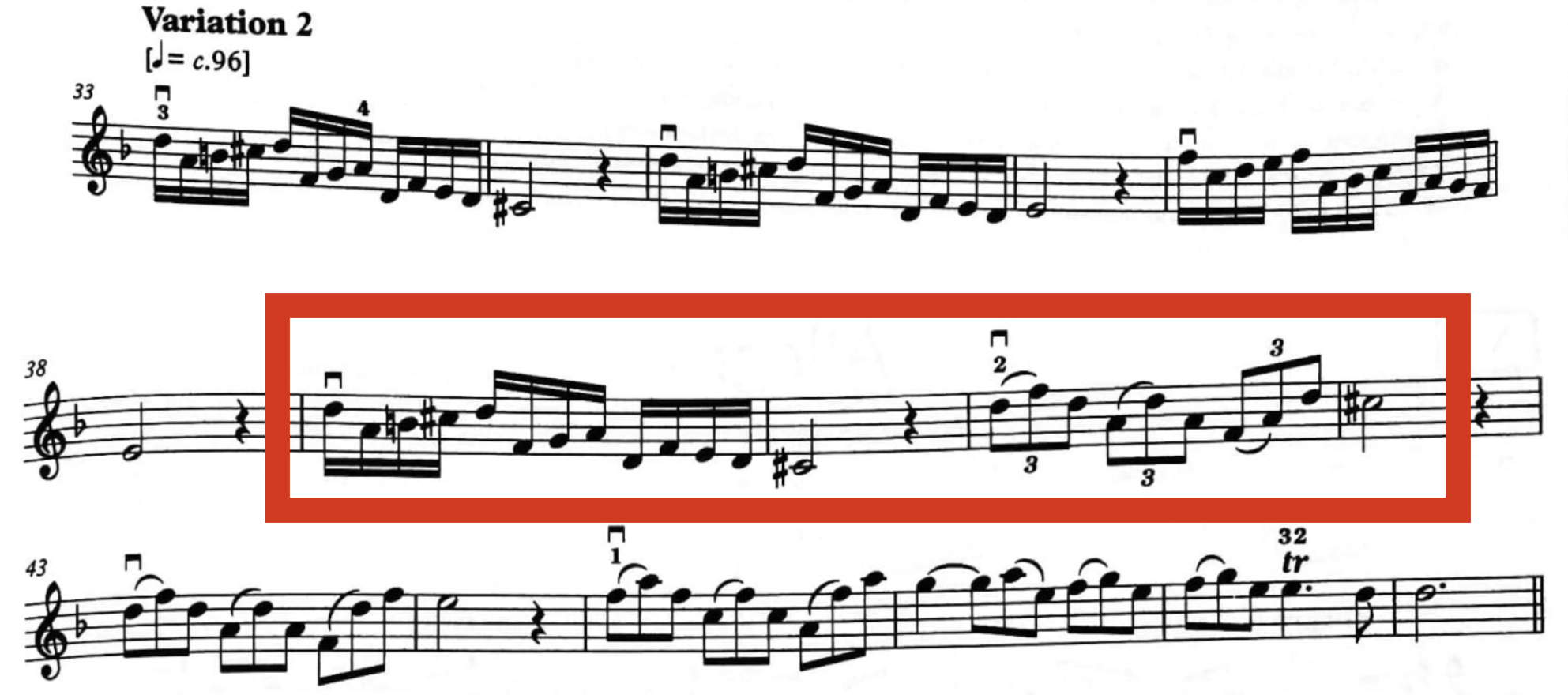
所以如視頻示範,既要在做到三連音的節奏穩定,又要保證三連音沒有重音。
另外,十六分音符到三連音的節奏轉換也是需要注意的,需要藉助節拍器來細緻的練習
二,連頓弓 ———A2
連斷弓是用弓朝一個方向將兩個以上的音一個一個的斷開演奏,這種弓法的演奏是由食指壓弓,用具有鬆弛和彈性的手臂推弓,加上手腕微小動作和食指一壓一鬆的動作配合產生出連斷音。要注意,左手手指要同右手食指壓力的動作配合好,右手壓力的動作和左手手指按音必須是同時對齊進行:這種弓多在上半弓演奏,也可在別的弓段。
我們見過連弓,也見過頓弓(音符正上方有一點),但是遇見既有連弓又有頓弓記號的,我們要更加注意了。所以其實演奏方法,我們可以簡單理解,兩個音同一個弓法方向,但是要斷開。並且A2這個曲目,還有節奏上的難點,‘前八後十六’,也就是八分附點音符,跟著十六分音符的節奏型,非常常見,但是在演奏中常常會把十六分音符拉的過長。
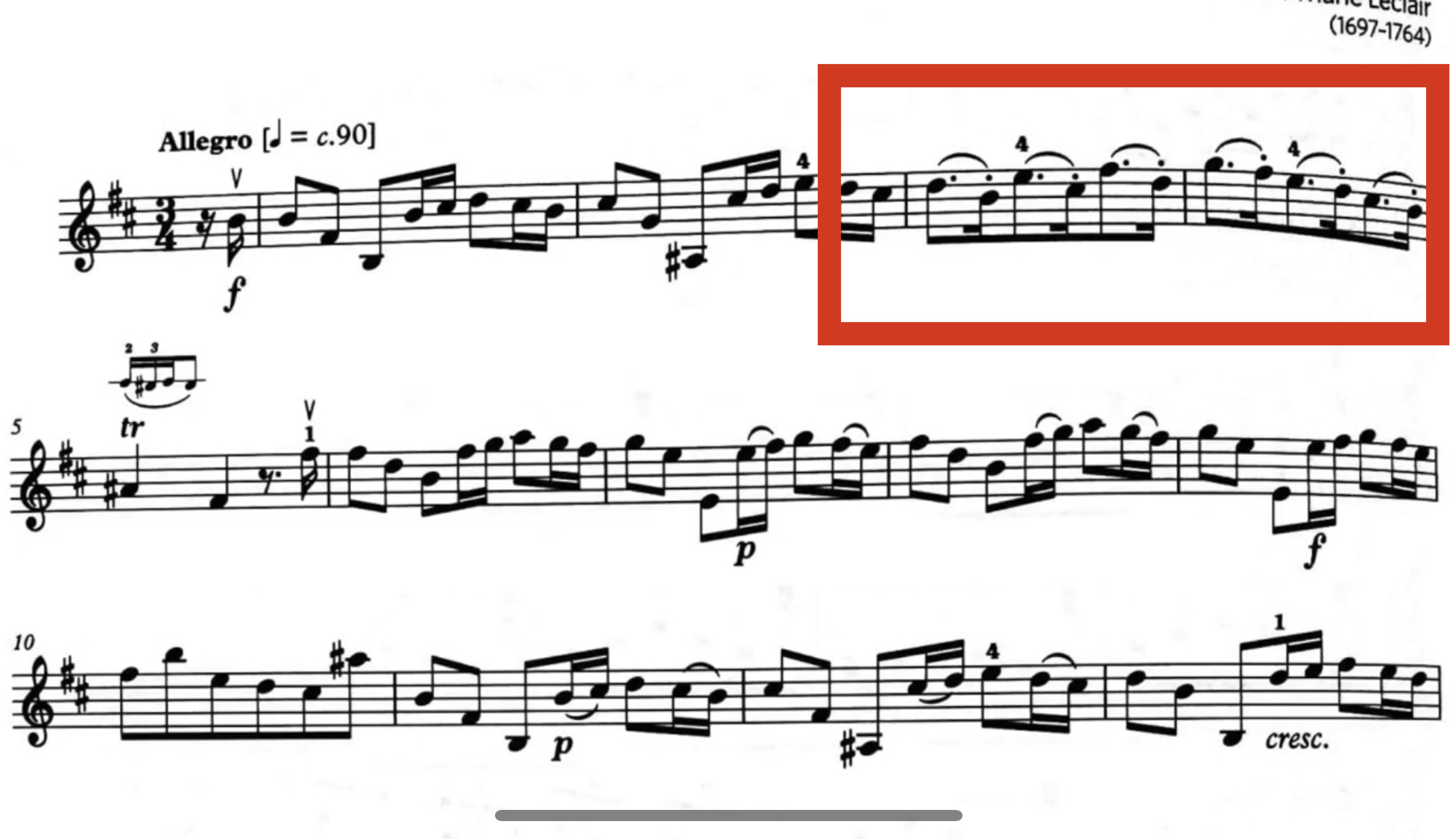
這裡逆月音樂的老師建議大家練習的時候。如視頻所示範
首先在我們先拆分理解,一個八分附點音符,等同於三個十六分音符,所以我們時值長度,可以唱成123/1。八分附點音符唱三拍。外加一個十六分音符。
其次當我們拿起琴練習的時候,可以先用空弦找好節奏感覺,然後再加上音符
三,同音音準————A3
很多學琴的朋友小看此處的音準,其實當有同音的時候,恰恰是最容易發現細小音準差異的。但這裡持續的G,我們可以與G弦空弦對照。
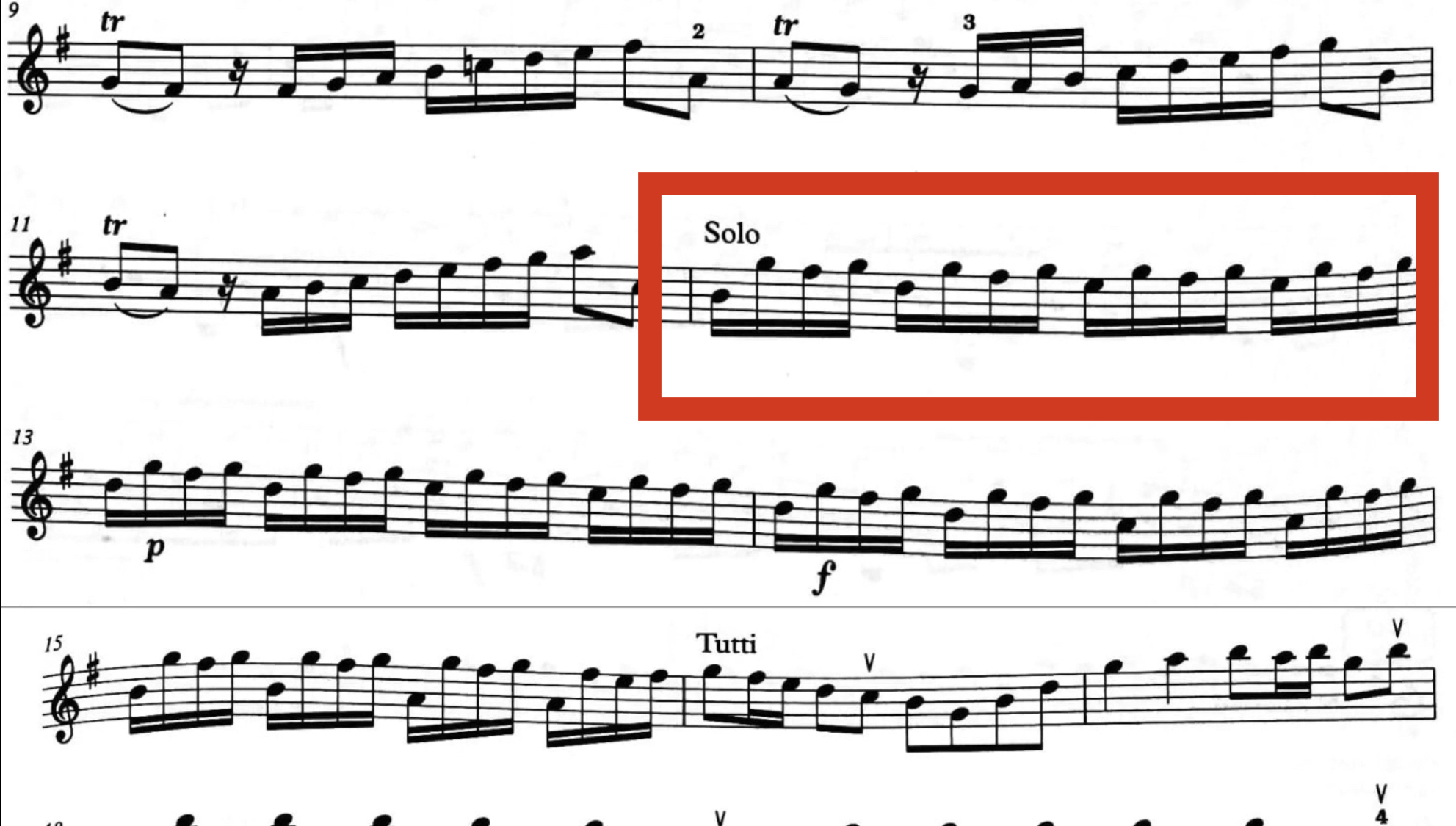
***************************************************************************
English version
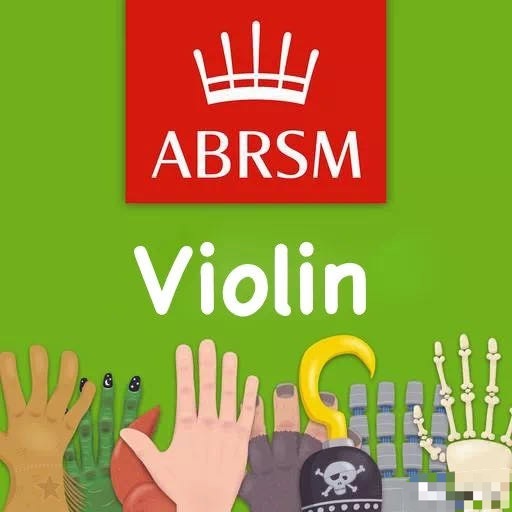
One, triplet and the same rhythm to control the bow speed——-A1
In the last issue of the repertoire about the third level, we have already understood the triplet, and we also know that the length of the three notes of the triplet is exactly the same, but why do we want to explain it here? Let's take a closer look, the first two notes of the triplet of the A1 track are bowed with the same bow, and the third note is quickly returned to the bow with the upper bow. Repeat the bow once. So the difficulty is that the speed of returning the bow is accelerated, but the bow pressure cannot be increased to ensure that the first two notes of the slurred bow and the third note of the separate bow are produced under the same bow length.
Therefore, as shown in the video demonstration, it is necessary to ensure that the rhythm of the triplet is stable, but also to ensure that the triplet has no accent.
In addition, the rhythm transition from the sixteenth note to the triplet also needs to be paid attention to, and it needs to be carefully practiced with the help of a metronome
2. Renton Bow ———A2
Continuous bow is to use the bow to play two or more notes one by one in one direction. The performance of this bow is to press the bow with the index finger, push the bow with the arm with relaxation and elasticity, plus small movements of the wrist and Press and release the index finger together to produce a continuous sound. It should be noted that the fingers of the left hand should coordinate well with the pressure action of the right index finger, and the pressure action of the right hand and the pressing of the left finger must be aligned at the same time: this kind of bow is mostly played in the upper half of the bow, and it can also be played in other bow sections.
We have seen ligaments and stun bows (there is a point directly above the note), but we should pay more attention to those with both ligament and stun bow marks. So in fact, we can simply understand the playing method. The two sounds have the same bowing direction, but they have to be disconnected. And the track A2 also has rhythmic difficulties, 'the first eight and the last sixteen', that is, the rhythm pattern of dotted eighth notes followed by sixteenth notes, which is very common, but the sixteenth notes are often used in performance. The notes are drawn too long.
The teacher of SMR Music here advises everyone to practice. as demonstrated in the video
First of all, let's split the understanding, an eighth dotted note is equivalent to three sixteenth notes, so our duration length can be sung as 123/1. Dotted eighth notes are sung three beats. Plus a sixteenth note.
Secondly, when we pick up the piano to practice, we can first use the empty strings to find a good rhythm feeling, and then add notes
Three, unison intonation————A3
Many friends who learn the piano underestimate the intonation here. In fact, when there are unisons, it is the easiest to find small differences in intonation. But for the continuous G here, we can compare it with the open string of the G string.





